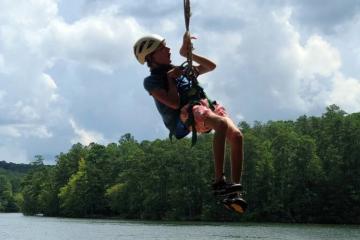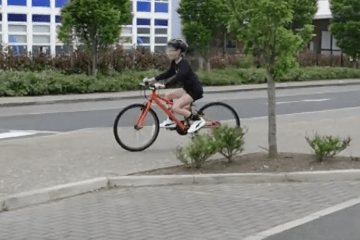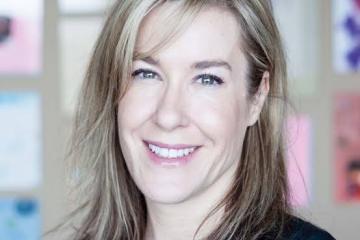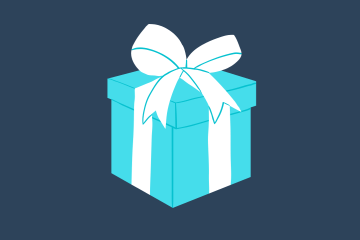Can Everyone Play? Helpful Tips for Creating Inclusive Accessible Playgrounds
Wouldn’t it be great if inclusive, accessible playgrounds were in every community for all to enjoy? Although progress is being made in certain areas, there is a lot more work to be done to literally level the playing field and help communities and designers understand what makes an inclusive accessible playground and why they are important for people of all abilities.
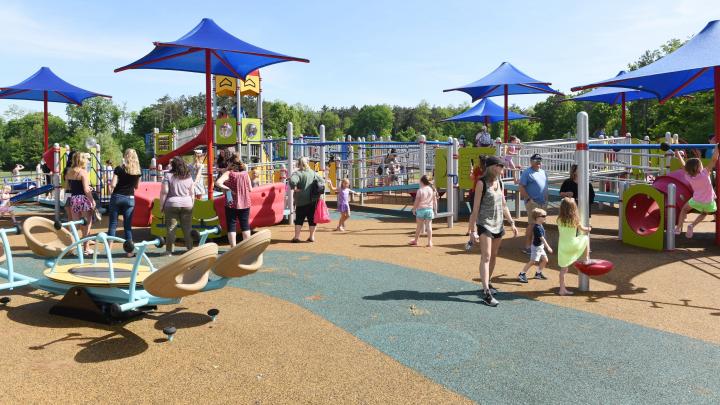
Recreation and play spaces that are designed to welcome and include individuals of all abilities is a key ingredient to creating healthy and inclusive communities. Great play spaces allow everyone to have fun, connect, explore, and participate…they engage the mind, the body, the senses, and the spirit, and help foster social connections and social skills.
If your community doesn’t currently have an inclusive playground or accessible recreational areas, families can play an important role in sharing their input and opinions with policy makers, park districts, schools, elected officials and other community groups. Don’t be afraid to speak up and share your views! Ensuring a playground or recreation area is inclusive and accessible requires that spaces be thoughtfully designed to factor in accessibility, well beyond physical access to the play space. For children with limited mobility, sensory or developmental differences, the spaces should take into consideration all the opportunities for everyone to interact with the space and encourage skill development no matter what their need or ability.
Here are some considerations for creating great community play spaces that you can share in your community.
Inclusive, access play spaces:
- Engage the senses and creating a multisensory experience for everyone.
- Foster play participation to impact social/emotional functioning, peer relationships, cooperation, self-expression, leadership, self-advocacy, communication and connection.
- Provide opportunities to benefit physical functioning promoting balance, coordination, strength and endurance, motor planning, engaging both gross and fine motor skills.
- Impact challenging behavior (anger/frustration) through opportunities for relaxation, or challenging activities that involve teamwork or develop trust.
- Develop cognitive function through activities that encourage imagination, memory, problem solving, decision-making, and creative expression.
Common barriers to consider:
How many times have you experienced challenges actually getting to a play or recreation space because of physical barriers? Maybe there isn’t an easy (or even possible) way for a wheelchair or person using a mobility device to get to the space. Or maybe the surface of the play area is not conducive to wheels or balance issues (we see you mulch!). When designing a play space, there are often times where physical access is the first barrier people experience. If you have the opportunity, share your input with schools, communities and designers and urge them to consider the following:
- Ensure parking and pathways are truly accessible. Often play spaces are located off the beaten path or in the center of larger public park. Are there spaces for wheelchair vans and are sidewalks paved?
- What is the surface of the playground? Is it mulch or dirt? Those who use wheelchairs, crutches or walkers will have difficulties on these types of surfaces. Ensure that there are wide accessible pathways and/or shock absorbing solid surfaces throughout the space.
- Are there safe transition spaces for an individual to get on and off equipment that are smooth and free of thresholds, steps, or other barriers?
- Are there quiet areas to accommodate those who might require less stimulation?
- Is there an accessible restroom? What type of changing space is there? Can it accommodate larger children or adults?
- Is there shade?
When selecting equipment for inclusive play spaces, it is important to take into consideration how individuals will interact with the equipment and how equipment can impact function and participation:
- If there are ramps and bridges designed to allow those who use wheelchair or other adaptive equipment access different areas of the playground, what is available for them to do once they get there? Often ramps lead to the top of a sliding board or a platform and at best have a sensory board or puzzle, but often, there is nothing for a child with limited mobility to explore. Can a musical component or other fun and collaborative sensory element be incorporated into the design?
- Adaptive swings are excellent for the vestibular system, proprioception and other senses. Playgrounds should have varying sizes of adaptive swings to accommodate small and large individuals and, if possible, have a platform swing to accommodate a wheelchair. How awesome it would be for all children to have the opportunity to experience the joy and fun of swings.
- Adaptive see-saws and other ride on equipment (bouncers, spinners) can promote cooperative play as well as engage/strengthen the core, foster motor planning, and improve coordination.
- Calming equipment and spaces can support sensory processing and allow individuals to explore a variety of textures while creating a soothing space.
- Provide real choices and a variety of challenges for varying ages and abilities.
Carefully considering the ways you and your community can create an inclusive recreation and play space doesn’t just benefit those with physical, developmental or sensory differences, it positively impacts the entire community. Inclusive play spaces are great places for kids of all abilities to learn, explore, imagine, and create together. They are also the foundation to foster new friendships for all…and ultimately they create a more empathetic and inclusive society.
Inclusive play spaces are great places for kids of all abilities to learn, explore, imagine, and create together.

